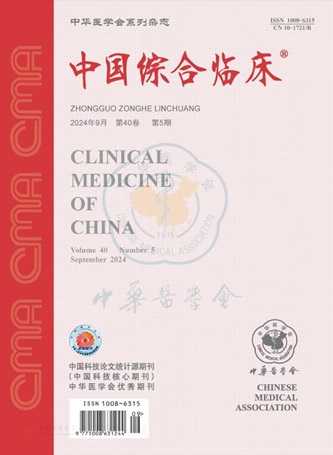纳米碳悬液标测乳腺癌新辅助化疗后腋窝淋巴结数的临床优势
引用次数: 0
摘要
目的比较纳米碳悬液标测法和非染色法在癌症腋窝淋巴结清扫和新辅助化疗后腋窝微淋巴结检测中的优势。方法选择自2018年1月1日至2018年7月1日接受新辅助治疗的66例癌症患者进行腋窝淋巴结清扫的前瞻性研究。采用随机数表法,将患者随机分为两组:纳米碳标测组(33例)和对照组(33例行)。术前皮下注射纳米碳24小时后,采用腋窝淋巴结清扫和无染料直接腋窝淋巴结清除。观察两组患者的腋窝淋巴结数目和微腋窝淋巴结数。结果纳米碳标测组腋窝淋巴结和微淋巴结数均高于对照组。差异有统计学意义(腋窝淋巴结数分别为(19.3±6.2)和(14.9±6.7),P=0.007;微淋巴结数为2.0(0.5,3.0)vs 0(0,1.0),Z=-4.328,P<0.001)。关键词:乳腺癌症;碳纳米粒子悬浮液;腋窝淋巴结清扫;微淋巴结;新辅助化疗本文章由计算机程序翻译,如有差异,请以英文原文为准。
The clinical advantage of nano carbon suspension mapping in the number of axillary lymph nodes detected after neoadjuvant chemotherapy for breast cancer
Objective
To compare the advantages of nano carbon suspension mapping method and non dye method in the number of axillary lymph nodes detected during axillary lymph node dissection and axillary micro lymph nodes detected after neoadjuvant chemotherapy for breast cancer.
Methods
From January 1st, 2018 to July 1st, 2018, 66 breast cancer patients who were to undergo axillary lymph node dissection after new adjuvant treatment were selected for the prospective study.Using the method of random number table, the patients were randomly divided into two groups: the group of nano carbon mapping (33 cases) and the control group (33 cases). After 24 hours subcutaneous injection of nano carbon before operation, axillary lymph node dissection and direct axillary lymph node dissection without dye were used.The number of axillary lymph nodes and the number of micro axillary lymph nodes in the two groups were observed.
Results
The number of axillary lymph nodes and micro lymph nodes in the nano carbon mapping group were higher than those in the control group.The differences were statistically significant (the number of axillary lymph nodes were (19.3±6.2) vs (14.9±6.7), P=0.007; the number of micro-lymph nodes were 2.0(0.5, 3.0) vs 0(0, 1.0), Z=-4.328, P<0.001).
Conclusion
Nano carbon suspension mapping can increase the number of lymph nodes detected in axillary lymph node dissection after neoadjuvant chemotherapy for breast cancer, and also has advantages in the detection of some small axillary lymph nodes that are not easy to find.
Key words:
Breast cancer; Carbon nanoparticle suspension; Axillary lymph node dissection; Micro-lymph nodes; Neoadjuvant chemotherapy
求助全文
通过发布文献求助,成功后即可免费获取论文全文。
去求助
来源期刊
CiteScore
0.10
自引率
0.00%
发文量
16855
期刊介绍:
Clinical Medicine of China is an academic journal organized by the Chinese Medical Association (CMA), which mainly publishes original research papers, reviews and commentaries in the field.
Clinical Medicine of China is a source journal of Peking University (2000 and 2004 editions), a core journal of Chinese science and technology, an academic journal of RCCSE China Core (Extended Edition), and has been published in Chemical Abstracts of the United States (CA), Abstracts Journal of Russia (AJ), Chinese Core Journals (Selection) Database, Chinese Science and Technology Materials Directory, Wanfang Database, China Academic Journal Database, JST Japan Science and Technology Agency Database (Japanese) (2018) and other databases.

 求助内容:
求助内容: 应助结果提醒方式:
应助结果提醒方式:


